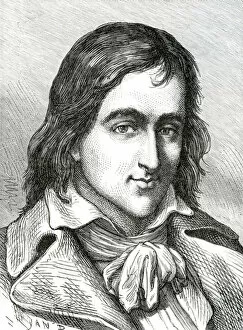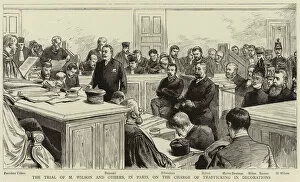Hebert Collection
Jacques Rene Hebert, a prominent figure during the French Revolution, was not only a journalist but also the founder and editor of the radical newspaper Le Pere Duchesne
All Professionally Made to Order for Quick Shipping
Jacques Rene Hebert, a prominent figure during the French Revolution, was not only a journalist but also the founder and editor of the radical newspaper Le Pere Duchesne. Born on 15 November 1757, he played a significant role in shaping public opinion through his extreme views. As an influential journalist, Hebert used his platform to voice his opinions and advocate for revolutionary ideals. His newspaper became known for its radical content and strong criticism of those in power. Through Le Pere Duchesne, Hebert fearlessly challenged authority and rallied support for the revolution. However, Hebert's involvement in politics eventually led to his downfall. In 1794, he faced trial alongside others accused of trafficking in decorations. The engraving depicting this trial showcases the intensity of the proceedings as justice was sought. Beyond journalism and politics, Hebert had other talents as well. A black-and-white photograph portrays him as "Hebert Peintre, " suggesting that he may have pursued painting alongside his journalistic endeavors. Intriguingly, there is another individual named Jacques-Rene Hebert who lived during different time periods - one depicted in an 1889 portrait and another captured in a 1791 image. These images offer glimpses into their lives at different points in history. Artistry seems to run within the family as evidenced by Ernest Hebert's artwork showcasing Malaria from 1848-1849. This piece by Ernest captures both the beauty and devastation caused by this disease that plagued many during that era. The diversity of artistic expression continues with Antoine Auguste Ernest Hébert's depiction of The Church of La Trinite des Monts in Rome during the 19th century. This stunning artwork transports viewers to a place filled with spiritual significance. Lastly, we encounter an unexpected connection between Jacques-Rene Hebert and nature—a European water ouzel walking into Lake Nantua before continuing submerged on the bottom of the lake in a bubble of air.



















